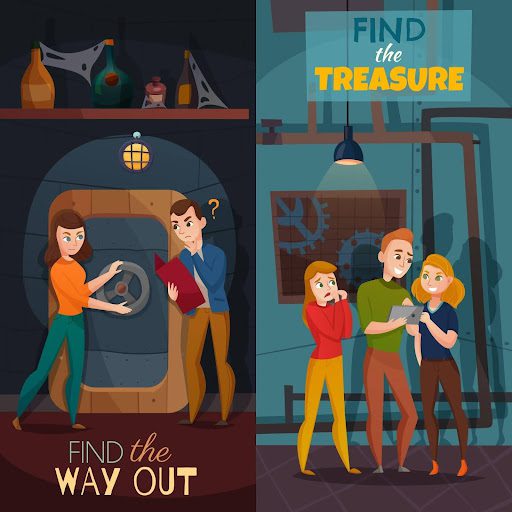In the realm of exquisite jewelry, tradition, skill, and artistry have long been intertwined with craftsmanship. Nonetheless, as we venture deeper into the 21st century, the jewelry sector is undergoing a significant transformation in the creation of beautiful pieces. One notable evolution is the emergence of lab-grown diamond engagement rings.
This blog post explores how modern craftsmanship is revolutionizing the creation of stunning lab-grown diamond engagement rings. Throughout this journey, we’ll delve into the intricate process of crafting these ethically sourced gems and understand how they are making a significant impact on both the environment and the world of fine jewelry.
The Emergence of Lab-Grown Diamond Engagement Rings
Before we dive into the craftsmanship behind lab grown diamond engagement rings, it’s essential to understand the concept and significance of lab-grown diamonds. Lab-grown diamonds are real diamonds created in controlled environments rather than mined from the earth. Lab-grown diamonds, with identical chemical, physical, and optical characteristics to their natural counterparts, stand as an exceptional choice for individuals committed to ethical procurement and sustainable practices.In recent times, lab-grown diamonds have experienced a growing popularity, especially among those who prioritize environmental concerns. These diamonds not only alleviate concerns about conflict but also greatly reduce the environmental impact when compared to conventional mining procedures, which entail excavation, high energy usage, and habitat disturbance. This shift in consumer preferences has sparked a rising demand for lab-grown diamond engagement rings, prompting jewelers to adjust their craft to align with evolving consumer values.
The Craftsmanship Behind Lab-Grown Diamond Engagement Rings
Crafting lab grown diamond engagement rings requires a blend of cutting-edge technology and traditional jewelry-making expertise. Here’s a closer look at the meticulous craftsmanship involved in creating these stunning pieces:
1. Diamond Growth
The process begins with diamond growth in a controlled laboratory environment. The two main methods for cultivating synthetic diamonds are high-pressure, high-temperature (HPHT) and chemical vapor deposition (CVD). These processes aim to mimic the natural conditions in which diamonds originate deep within the Earth’s mantle. Skilled technicians and scientists oversee the growth process to ensure the diamonds develop with precision.
2. Diamond Cutting and Polishing
After the initial cultivation of a lab-grown diamond, it proceeds through the identical cutting and polishing procedures employed for natural diamonds, showcasing the indispensable skills of diamond cutters. These craftsmen use their knowledge and skills to determine the ideal facets, angles, and proportions that will maximize the diamond’s brilliance and fire.
3. Design and Setting
Craftsmanship extends to the design and setting of lab-grown diamond engagement rings. Jewelers work closely with clients to create unique and personalized designs that cater to individual tastes and preferences. The choice of metal, the arrangement of accent stones, and the overall aesthetic of the ring are all meticulously crafted to ensure a stunning and meaningful piece of jewelry.
4. Ethical and Sustainable Practices
One of the hallmarks of modern craftsmanship in lab-grown diamond engagement rings is a commitment to ethical and sustainable practices. Jewelers who specialize in lab-grown diamonds often prioritize transparency in sourcing and manufacturing, ensuring that every step of the process adheres to high ethical standards. This commitment resonates with consumers who seek jewelry that aligns with their values.
5. Quality Assurance
Craftsmanship in lab-grown diamond engagement rings extends to quality assurance and certification. Independent gemological laboratories assess and certify the diamonds, providing documentation that verifies their authenticity and quality. This transparency builds trust between jewelers and customers, allowing buyers to make informed decisions about their purchase.
The Benefits of Choosing Lab-Grown Diamond Engagement Rings
The craftsmanship behind lab grown diamond engagement rings offers numerous advantages for both consumers and the environment. Here are several significant advantages of lab-grown diamonds:
2-Ethical Sourcing: Lab-grown diamonds are free from conflicts and don’t support the unethical practices associated with traditional diamond mining.
Environmental Responsibility: Producing lab-grown diamonds significantly reduces the environmental impact in contrast to traditional mining, leading to fewer carbon emissions and less harm to ecosystems.
3-Affordability: Lab-created diamonds often offer a cost-effective alternative to natural diamonds, catering to consumers seeking value for their money.
4. Customization: Modern craftsmanship allows for endless design possibilities, enabling customers to create truly unique and personalized engagement rings.
5. Unparalleled Quality and Purity: Lab-grown diamonds undergo stringent quality control processes, guaranteeing that every diamond attains the pinnacle of purity and radiance.
6. Advancements in Innovation and Technology: The realm of lab-grown diamond creation remains at the forefront of progress, constantly expanding the horizons of diamond excellence and size.
Lab-Grown Diamond Engagement Rings in the Modern Market
Lab-grown diamond engagement rings are gaining widespread popularity and have become a prominent fixture in the contemporary jewelry market. Esteemed jewelers and designers are wholeheartedly embracing this innovative approach to craftsmanship, resulting in the creation of exquisite pieces tailored to a wide array of tastes and styles. The availability of lab-grown diamonds in various shapes, sizes, and colors unlocks boundless creative possibilities, appealing to a diverse range of consumers.
Furthermore, these lab-grown diamond engagement rings are exerting a significant influence on the conventional diamond industry. As consumer awareness regarding the ethical and environmental concerns associated with mined diamonds continues to grow, the demand for lab-grown alternatives is on the upswing. This transformation has prompted well-established jewelry brands to expand their offerings by incorporating lab-grown diamonds into their collections.
Conclusion
Craftsmanship in the modern age has adapted to meet the evolving demands of consumers who prioritize ethical sourcing, sustainability, and innovation. Lab-grown diamond engagement rings represent a remarkable fusion of cutting-edge technology and traditional jewelry-making expertise. From the meticulous growth and cutting of the diamonds to the design, setting, and ethical practices involved, these rings exemplify the best of both worlds.
Lab-grown diamonds are steadily gaining prominence within the fine jewelry market, symbolizing the industry’s dedication to advancement, ethical practices, and environmental stewardship. Opting for a lab-grown diamond engagement ring not only yields an exquisite and meaningful adornment but also plays a pivotal role in fostering a sustainable and ethically responsible future for both the jewelry sector and the environment. So, for those seeking both beauty and conscience in their engagement rings, lab-grown diamond rings are undoubtedly the epitome of modern craftsmanship.



